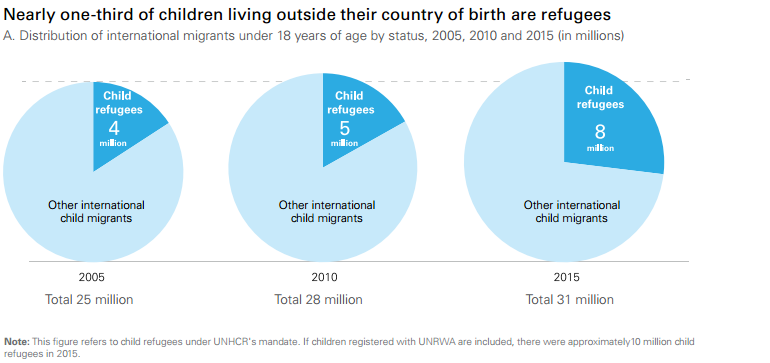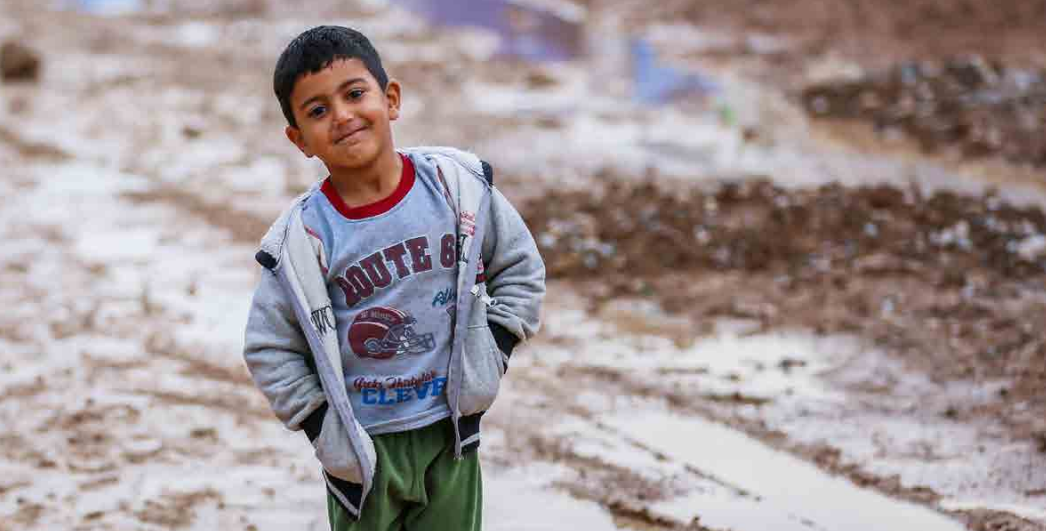THE FORGOTTEN. Children refugee and migrants – a childhood left behind in search for shelter and safety
While most of the children spend their days surrounded by a loving family, playing outside with their friends and going to school, let’s not forget about the other children that are not that fortunate. THE FORGOTTEN: children exposed to poverty and famine, forced labour, violence or suffering in the war zones.
EvoNews will publish a series of articles which aim to bring awareness to these serious issues and inspire people to take action to improve the worrisome situation of millions of children that are struggling instead of living their childhood without a care in the world.
The severity of the refugee crisis has had a significant impact on Europe in recent years. Millions of families trying to find a better life are on the move in unprecedented numbers, leading to the highest level of refugee children since World War II.
Whether they are trying to escape the war in Syria or violence in Central America, natural disaster, poverty or famine, millions of children have been forced to flee from their homes, their schools in pursuit of a better life, UNICEF said in a report.
A record number of refugee and migrant children left their childhoods behind in a desperate search for a safe refuge. Many of the children are unprotected, deprived of education, often in desperate circumstance, without food, clothing, or temporary shelter.

In many cases, they are separated from their families or alone and exposed to smugglers and traffickers. Today, nearly 1 in every 200 children in the world is a child refugee. Between 2005 and 2015, the number of child refugees under the UNHCR’s mandate more than doubled. During the same period, the total number of all child migrants rose by 21%.
Dependent on smugglers on dangerous roads, they can easily fall victim to traffickers and other criminals. Many are subjected to extreme forms of abuse and deprivation during their journeys, warns the United Nations High Commissioner for Refugees’ (UNHCR).
The growing crisis of refugee and migrant children. A global perspective
Around the world, nearly 50 million children have migrated across borders or been forcibly displaced. More than half of these boys and girls fled their homes due to horrific conflicts and insecurity – 28 million in total, according to the most recent report from UNICEF.
Moreover, the number of child refugees increased by roughly 75 percent between 2010 and 2015. It’s no coincidence that the same time period saw 15 conflicts either break out or reignite – from the Syrian Arab Republic to South Sudan, from Yemen to Afghanistan.
Nearly one in three children living outside their country of birth is a refugee; while for adults, the proportion under UNHCR’s mandate is less than 1 in 20.
In 2015, just two countries – Syria and Afghanistan – accounted for nearly half of all child refugees under UNHCR’s mandate; about three-quarters of all child refugees under UNHCR’s mandate came from only 10 countries.
Together, Syria, Iraq, and Yemen accounted for nearly one-third of the world’s total of conflict-induced internal displacements by the end of 2015.

The 10 countries hosting the largest numbers of refugees are all in Asia and Africa, with Turkey hosting by far the largest total number of refugees under UNHCR’s mandate. Although complete age-disaggregated data are not available for refugees in Turkey, its substantial share of total refugees makes Turkey likely the host of the largest number of child refugees in the world.
Worldwide, nearly 28 million children have been forcibly displaced. This number includes some 10 million child refugees, approximately 1 million asylum-seeking children and an estimated 17 million children displaced within their own countries by violence and conflict
In the ten-year period between 2005 and 2015, the global number of child refugees under the protection of UNHCR more than doubled from 4 million to over 8 million. In just the five years between 2010 and 2015, the number of child refugees under UNHCR’s mandate shot up by 77 percent.
By comparison, the total number of child migrants rose by only 21 percent during the decade between 2005 and 2015.

By an overwhelming margin, Lebanon and Jordan host the largest number of refugees relative to their populations and the highest density of refugees relative to their territories (Figure 1.13).30 Today, nearly one in five people in Lebanon is a refugee.
When considering refugee-hosting countries by income level, the Democratic Republic of Congo, Ethiopia and Pakistan host the highest concentration of refugees relative to their resources.
Overall, the refugee population is much younger than the migrant population. While a clear majority of the world’s migrants are adults, children now comprise half of all refugees.
Record number of solo migrant children
About 200,000 unaccompanied children applied for asylum across 80 countries from 2015 to 2016 and another 100,000 children were stopped at the U.S.-Mexico border, UNICEF said.
Taken together, 300,000 children traveled alone worldwide from 2015 to 2016 – a five-fold increase since 2010, when 66,000 children were reported to be on the move.
UNICEF said the central Mediterranean route between North Africa and Italy is one of the world’s deadliest, with 4,579 deaths last year, including some 700 children, many from Eritrea, Gambia, Nigeria, Egypt, and Guinea.
More than 75% of the 1,600 14- to 17-year-olds who arrived in Italy reported being held against their will or forced to work.
The risks and dangers are unimaginable
Children, particularly those who travel on their own or become separated from their families, are at risk of many forms of violence and exploitation throughout their journeys. At least 300,000 unaccompanied and separated children were recorded in 80 countries in 2015-16, a rise of almost 500% on the 66,000 documented in 2010-2011, according to a Unicef report.

Unaccompanied and separated children accounted for 92 percent of all children arriving in Italy by sea in 2016 and the first months of 2017.
“One child moving alone is one too many, and yet today, there are a staggering number of children doing just that – we as adults are failing to protect them,” said UNICEF Deputy Executive Director Justin Forsyth. “Ruthless smugglers and traffickers are exploiting their vulnerability for personal gain, helping children to cross borders, only to sell them into slavery and forced prostitution. It is unconscionable that we are not adequately defending children from these predators.”
While the Mediterranean route is favored by traffickers – some children have even had organs removed – traffickers are also active on other routes, the report said.
Boys and girls account for three in every five victims of human trafficking in Central America and the Caribbean, according to the United Nations Office on Drugs and Crime. Sub-Saharan Africa and Central America and the Caribbean have the highest share of children among detected trafficking victims at 64 and 62 per cent respectively.
Many of them face likely sexual exploitation, said Maria Cristina Perceval, UNICEF’s Latin America regional director.
“Because the difference with this and other crimes and exploitation is that a girl who is exploited sexually is seen as merchandise that can be used again and again,” Perceval told the Thomson Reuters Foundation in a phone interview.
UNICEF said human smugglers who guide children along their journey use rape, violence and extortion en route.
Africa’s biggest refugee crisis: more than 2 million children flee South Sudan
War and famine have forced more than 2 million children in South Sudan to flee their homes, the United Nations said.
No refugee crisis today worries me more than South Sudan,” Valentin Tapsoba, the Africa chief for the U.N. refugee agency UNHCR, said in a statement.

In a country of 12 million people, nearly three in every four children do not go to school, UNHCR and the U.N. children’s agency UNICEF said. More than 1 million children have fled outside South Sudan while another 1 million are internally displaced.
Many South Sudanese refugees have fled into neighbouring Uganda, Kenya, Sudan or Ethiopia, nations which are already struggling to provide enough food and resources for their own populations.